
Tech Talk
When to replace tubes?
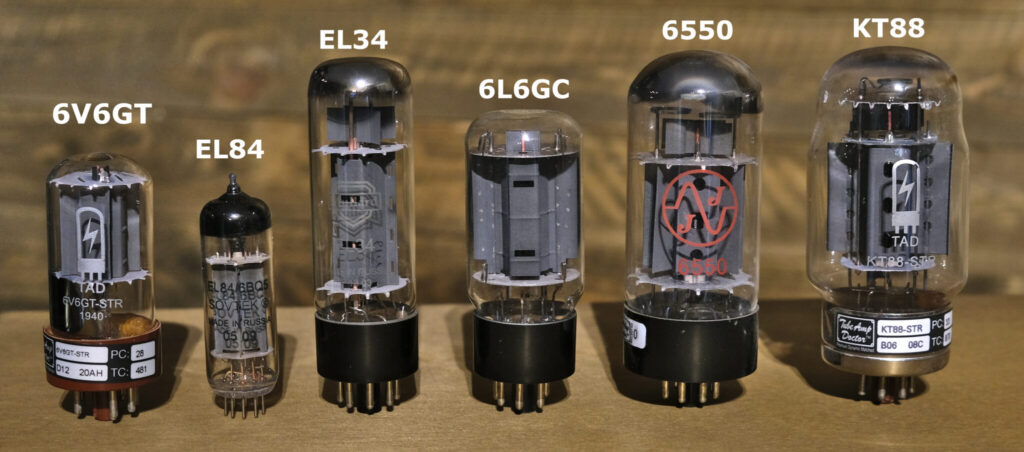
Normally, power tubes can last many years at daily use, but over time they lose performance. Signs of worn-down tubes:
- Muddy bass response
- Lack of treble
- Loss of power
- Changes in volume
- Higher noise level
- Rattling noise (mechanically unstable/microphonic tubes)
Note, that correct bias adjustment for power tubes are essential to their life-span and the sound of your amp.
Bias too hot: Power tubes wear down quickly.
Bias too cold: Cross-over distortion and muddy bass response, but less wear on the power tubes. Adjusting the bias might be adequate, so you don’t need to replace the power tubes.If a power tube fails, it often shorts the plate to the cathode and blow the HT fuse. In this case, it is recommended to replace all power tubes. The ROAR – Quad 15 is built with a short circuit-proof power supply, so you don’t need to replace any fuse if a power tube shorts.
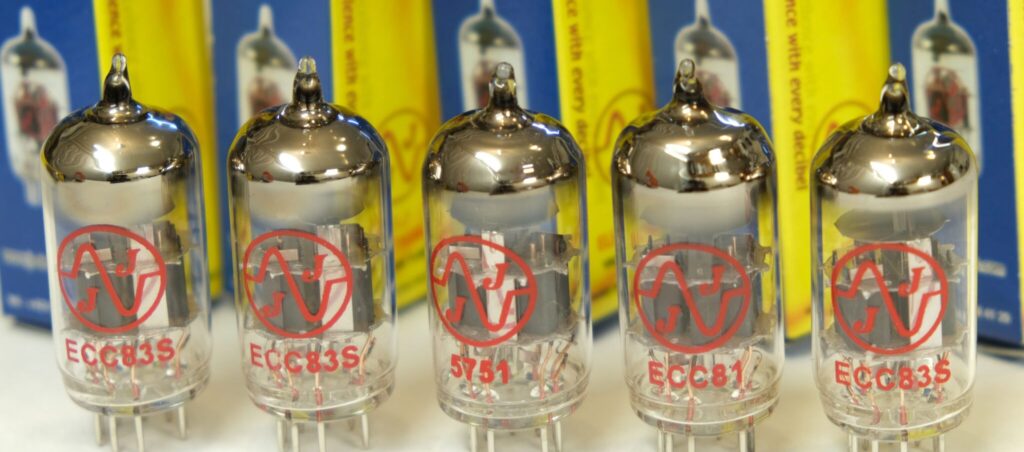
Contrary to power tubes, preamp tubes might last for decades, but of course it’s not certain. (The metal-parts inside the tube don’t get worn the same way as power tubes due to a much smaller current flow.) Common signs of faulty preamp tubes are:
- Crackling noise
- Increased overall noise
- Changes in volume
General tube faults
White dust inside a tube is a sign of a puncture of the glass, which can happen to any tube, new or old. Must be replaced.
Changes in volume over time can be caused be any preamp or power tube and the faulty tube can be hard to locate. If your amp has an “Effect Return” input, it can be used to test the power amp section independent of the preamp section. Connect any signal source (could be your phone) to the “Effect Return” input and test the power amp section over a longer period of time to make sure no changes in volume occurs. If so, the problem is isolated to the preamp section, where one tube at a time can be replaced to isolate the faulty preamp tube.
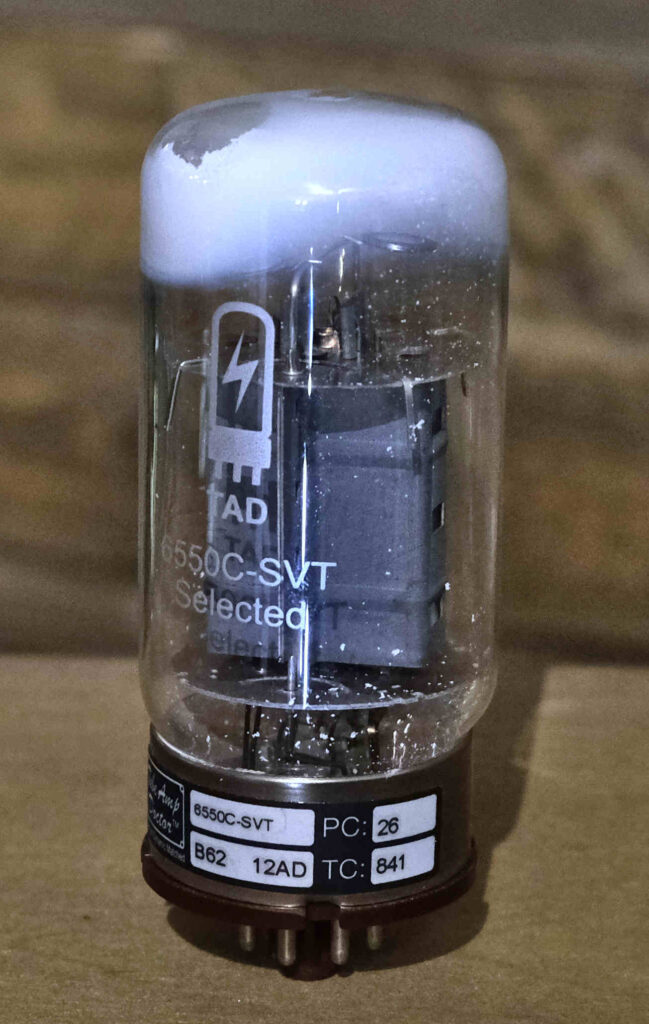
Contact cleaner & Lubrication
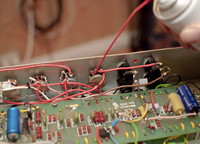
Products for cleaning electronics such as potentiometers, connectors & switches can generally be divided in 3 groups:
- Contact Cleaner (no residues)
Dissolves corrosion and oxidation on the contact surfaces. Leaves no residues, which means that it will evaporate and leave the contact surfaces clean. Isopropyl alcohol can also be used. Kontakt 60, PRF 6-68, etc.
… - Lubricant / anti-corrosion protection
Can be based on grease, vaseline, oil and in some products silicone. Rheolube 716a, Kontakt 701, etc.
… - Contact Cleaner with lubrication / anti-corrosion protection
Combined cleaning and lubrication in one bottle. Deoxit D-Series, Kontakt 61, etc.
Potentiometers are generally built with a resistive track (carbon, conductive plastic, cermet or wirewound) and a piece of metal (wiper) that slides on the resistive track. When the wiper is moved, some friction will occur that will eventually limit the life of the potentiometer. Lubrication and a robust (thick) resistive track are therefore essential for long lasting potentiometers.
Connectors such as tube sockets, phone & RCA connectors, board-to-board connectors, etc. can suffer from bad (scratchy) connections due to contamination or oxidation of the contact surfaces. Here, there are no moving parts once the connections have been made, hence there’s no need for lubrication. (No residue) contact cleaner are often preferred. Contact cleaner with lubricant for electronics can also be used.
Sliding switches should be treated the same way as potentiometers.
- Contact Cleaner (no residues)
Contact cleaner (no residues) + lubricant:
- Apply contact cleaner and turn the potentiometers (pots). (Dissolvent will be distributed on the resistive track)
Test the pots. All scratchy noises should be be gone when the pot is turned. - If needed, wait a bit and apply contact cleaner again. Turn the pots.
- Ideally, let the contact cleaner evaporate before applying lubricant. Turn the pots. (No harm is done applying the lubricant before the cleaner has completely evaporated, but there will be a greater chance that the contact cleaner dissolves the lubricant, which limits the lubricating effect.)
Contact cleaner with lubrication: Follow step 1 and 2 only.
If the resistive track is totally worn down, cleaning & lubricating might only help as long as the pots are “wet” after applying the products. Here, the pots will typically become scratchy again after a day or two. Replacing the pots are needed.
Some products like WD40 will both clean and lubricate, but leave a sticky surface on the resistive track that attracts dust and might harden over time leaving a non-conductive film on the resistive track, which will worsen its performance. However, if a potentiometer is treated with WD40, it can easily be cleaned and substituted with a better lubricant.
- Apply contact cleaner and turn the potentiometers (pots). (Dissolvent will be distributed on the resistive track)
The main cause of all evil in audio equipment is bad connections and scratchy switches and pots. The contact material in jack sockets is usually a thin layer of tin or silver on top of brass or bronze. When the silver or tin layer is worn off, the contact surface will behave very random. Cleaning the surface with contact cleaner might help right off, but the bare brass or bronze surface will quickly corrode again, and the problem is back. Here, the worn-down jack socket must be replaced.
The built-in switch function in jack sockets is also a very common problem. Many amps are designed so the signal to the power amp always go through the built-in switch in the “Effect RETURN” jack socket. When dust or corrosion deteriorates the contact surface, your amp might have random crack noise that comes and goes. Try and connect your signal directly into the RETURN jack socket and see if the problem goes away. The Quad 15 does not rely on built-in jack socket switches in any of its effect loops to ensure solid performance over time.


Secrets of vacuum tubes
History of Guitar Amps

Guitar and bass amplifiers were basically invented in the 50’s and 60’s by iconic brands, which are still the dominant and most sought-after manufacturers of today’s amplifiers – you know em all!. Back then, vacuum tube-circuitry was used as the only option for controlling electric power to the speaker, similar to all other electronic equipment of that age. When transistors came during the 70’s, the vacuum tubes became obsolete in most equipment, except for HiFi and audio, guitar and bass amplifiers.

So why did the vacuum tube survive in audio gear, when it died out in all other electronic equipment 50 years ago ? Because of all the magical, warm, fuzzy and superstitious emotions that have surrounded the glowing vacuum tubes ever since ? Or are there any technical reasons why they just sound “better” than transistors ?
Secrets of vacuum tubes (Advanced)
Through the years I’ve done alot of research to figure out whether the stories of the superior sound quality of tubes VS transistors have any technical and measurable reasons, or is it more driven by good salesmen and superstitious feelings ? Therefore, I wanna share my thoughts to de-mystify and hopefully clarify some true measurable differences between tubes and transistors in guitar amplifiers.
In my opinion, the most important character of the guitar tube amp is due to the power amplifier, which is traditionally designed around an output transformer. Here, the output tubes are pentodes or tetrodes basically operated as voltage controlled current sources. This means that the tube amp will deliver more bass and treble due to the speaker’s frequency dependant impedance. If you provide the same voltage for all frequencies (transistor amps), the bass and treble levels will be dampened compared to tube amps, where bass and treble are naturally boosted in a lively way that’s hard to achieve by EQs or modelling amps.
A tube amp’s ability to soft-clip and compress the pickup signal is the very essence of a good clean guitar sound with long sustain and controlled pick attack. When the input signal to a tube reaches the point of overdrive, the grid of the tube starts to draw current, which soft-clips the pick attack and loads up the coupling capacitor to the previous stage. This phenomenon is called DC-shift, which will push the working point of the tube towards less gain (compression). As the note fades out, the DC-shift fades out as well, which will pull the tube back towards its initial working point while increasing the gain. By designing the tube circuits carefully to ensure smooth DC-shifting through the stages, natural compression can be obtained for clean sounds along with creamy overdrive when the gain knob is turned up.
First reason: The maximum continuous output power of all amplifiers are measured by applying a constant sinusoidal waveform. Transistor amplifiers clip the signal at the same voltage level for all frequencies, which is determined by the voltage level of the power supply, typical plus minus 40V for a 100 W amp with an 8 ohm speaker. Tube amps however, will clip the signal later at bass frequencies compared to mid frequencies due to the bass resonance of the speaker (~ 100 Hz) and the current controlled output stage. Tube amps that are specified to 100W (sinusoidal, 1 kHz ~ 40 Vpeak with an 8 ohm speaker ) are actually able to provide a higher voltage level to the speakers at bass frequencies and therefore more power. I.e. a 100W tube amp connected to an 8 ohm speaker can measure up to 60V peak. A transistor amp needs to be rated to 225 W to enable the same voltage at bass frequencies.
Second reason: The most known reason for the louder tube watts is the tube amplifiers ability to soft-clip the audio signal. Here, the transients of the pick attack are limited in a more smooth way to dampen the high frequencies when clipping. Since the guitar pickup signal is very dynamic, the headroom and therefore the overall sound level of the tube amplifier seems much louder than for an equally rated transistor amp.
So, is the louder tube watts an argument to buy a tube amplifier ? I think not. A 1000W transistor head for bass guitar is usually much cheaper than a 300W tube head. A high wattage transistor amp of good quality offers enormous headroom and clean distortion free power at reasonable costs. The advantage of power tubes is the interaction with the speaker that gives a dynamic bass response and clear highs, but at a price way higher per watt.
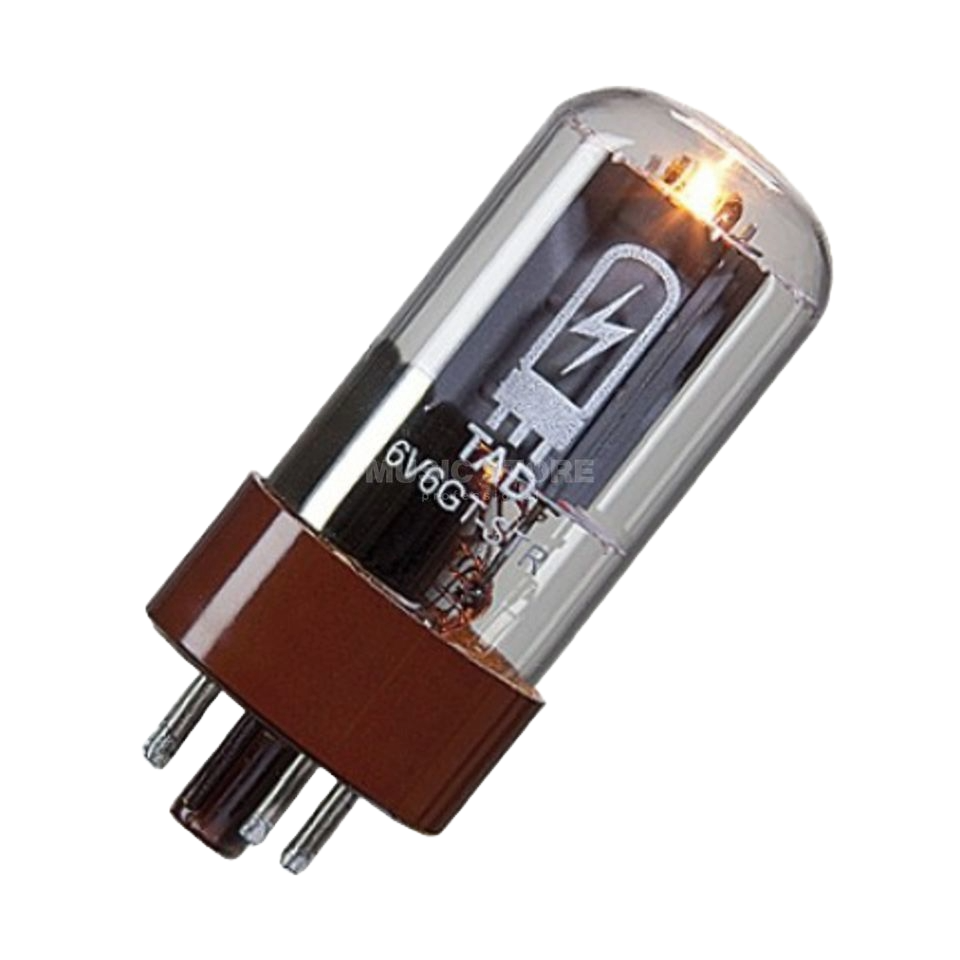
4. Difference between preamp tubes
Swapping preamp tubes is a well known exercise for enthusiasts that want to fine tune their amp. Here, I want to be deadly honest: The differences are very small in guitar amps and it takes trained ears to pickup the small differences, so don’t expect huge improvements from one ECC83 preamp tube to another. However, I’ll try to describe the most noticeable differences here:
Types of preamp tubes:
ECC83 same as 12AX7 is the most common preamp tube in guitar amps and has the highest gain amongst its common cousins ECC81 (medium gain) and ECC82 (low gain). The gain varies slightly from brand to brand, but the most noticeable difference is their dynamic characters due to construction.
More surface area for the electrons results in increased dynamics and good clarity. Long plates are typically more prone to microphonic feedback and rattling noise, which makes them more common as effect loop drivers and phase splitters.
Good tubes are available for allround applications with good dynamics and low microphonic feedback.
More compressed sound and soft clip ability suitable for preamp stages in guitar amps. Very low microphonic feedback is achieved by some brands, but not all.
Even tho the difference from one ECC83 to another is small, replacing an ECC83 with an ECC81 in example the preamp stages can tame a high gain amp for a better overdrive sound at low gain settings.
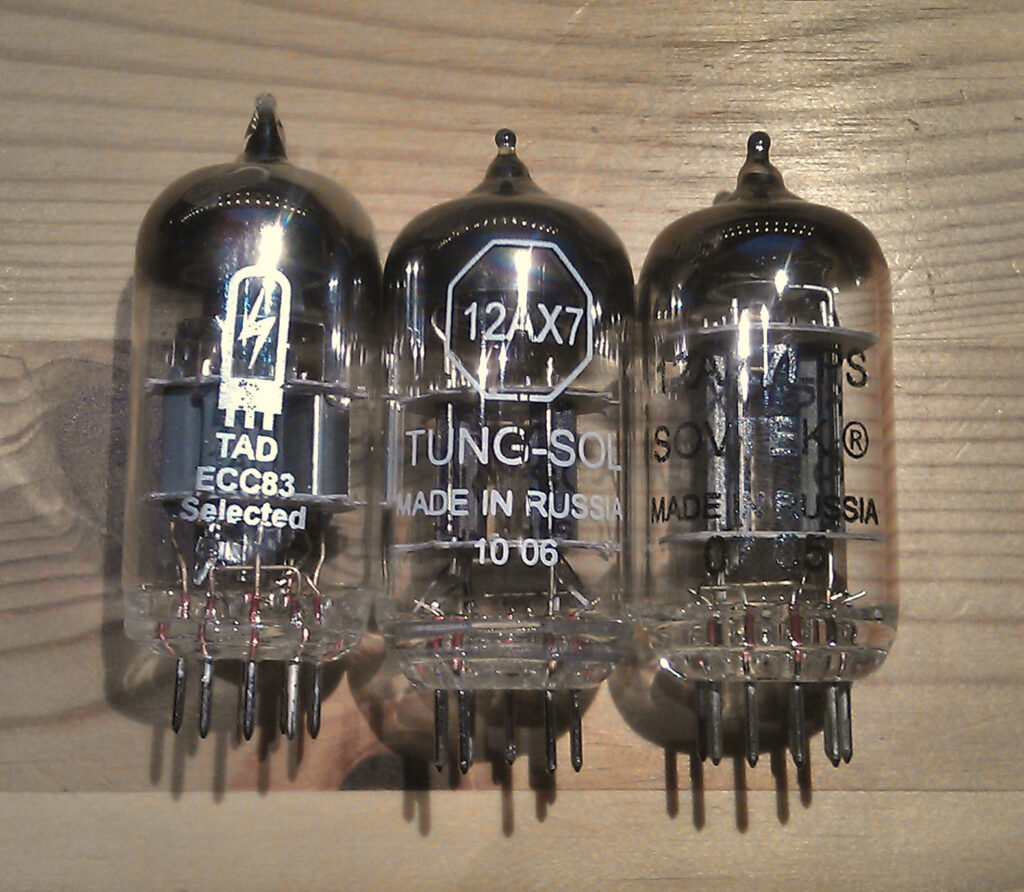
5. Difference between power tubes
The audible difference between power tubes are typically more significant than for preamp tubes as their basic construction vary alot from one type to another. I’d like to emphasis that the basic design of your amp’s output stage around the output transformer interacts with the power tubes in a way so it’s hard to claim that one tube sounds like ……… and another tube sounds like …… – especially when the amp is cranked (power amp overdrive). However, I’ll try my best to describe the most commonly understood differences:
The most common family of power tubes in guitar amps. They deliver strong and tight lows with good clarity through mid sand highs. Since they are “beam tetrodes” they have lower gain, and need more gain in the driver stage to reach overdrive than true pentodes like EL34. 6L6’s have a good clean response and a more rapid transition into overdrive than EL34s. Traditionally American amps were born with 6L6GC. Typical output power of 25 W per tube in a push-pull power stage.
More gain with more added harmonics before overdrive compared to the 6L6 family. EL34’s are also known for their smooth overdrive sound with enhanced mids for a great cut-through crunch. Traditionally, the most common type of tube for British amps. Typical output power of 25 W per tube in a push-pull power stage.
Sound characteristics close to the 6L6 family, but with less output power: 7 – 12 W per tube in a push-pull power stage. The total power dissipated in a 6V6 tube is lower than practically all other tubes, which makes them less prone to overheating.
Smallest power tube commonly available, delivering around 7 – 12 W per tube. They run hotter than 6V6 due to their smaller surface area and higher heater current. Soundwise they’re closer to 6V6 and 6L6 than to EL34 despite the name when compared in the same amp. However, EL84 amps might in general have their own recognizable character due to the typical design of the output stage.
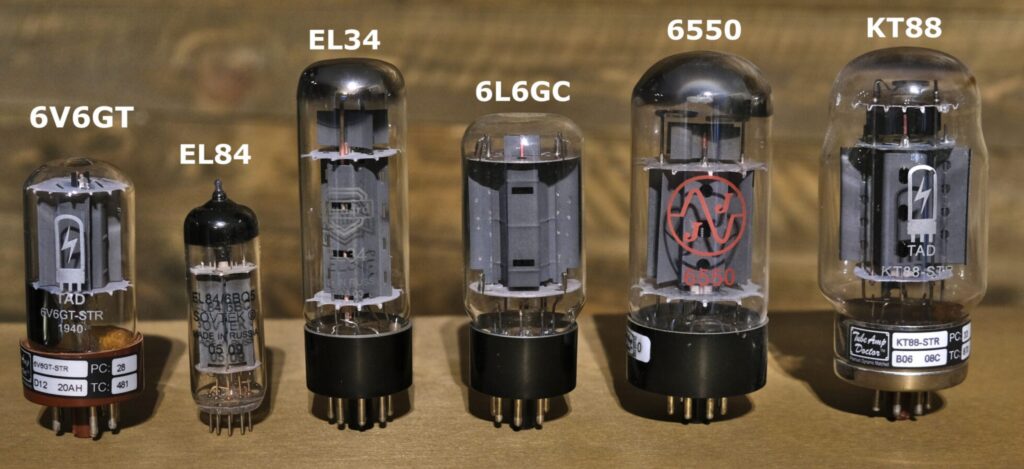

Parallel or serial effect loop?
The effect loop in many amps can be configured to both serial or parallel, but what’s the difference ?
And when should I connect my effect unit (pedal) one way or the another ?
A serial effect loop is the most common type, where you let the effect unit blend the effect with the dry (direct) signal. This knob is typically called “MIX”, “BLEND” or “EFFECT LEVEL”. The drawback of serial effect loops is that the whole signal often has to travel through long cables at low levels to i.e. an effect pedal on the floor. This can degrade the signal to some degree.
Parallel effect loops keep the dry (direct) signal within the amp to avoid any signal degradation. Here, it is the amp’s own circuit that blends the incoming effect signal from the “Return” input with the dry signal. The effect level added to your sound can be controlled with the output volume on the effect unit or maybe with an “Effect return level” knob on your amp.
Unfortunately, some amps are built with a serial effect loop that is not 100% serial, which results in a weird “phasing” sound. Using digital effects in the effect loop with A/D & D/A converters, a small delay is introduced (latency) to both the effect signal and the dry signal going thru the digital effect unit. If even a small part of the dry signal is unintendedly fed to the power amp within the amp, the “phasing” sound will occur.
You can ask your local repair guy if a mod is possible to make the serial loop 100%.
The Quad15 is designed with relay controlled effect loops to make sure that it’s either 100% parallel or 100% serial.
